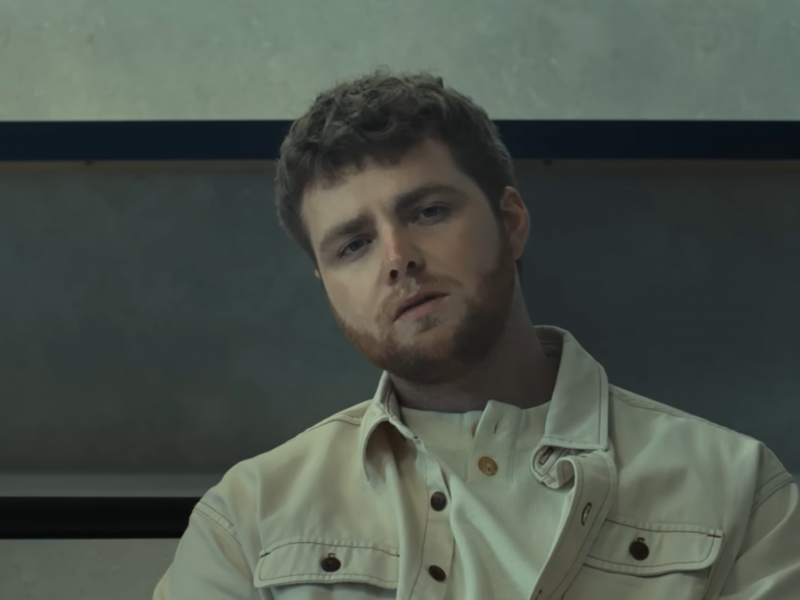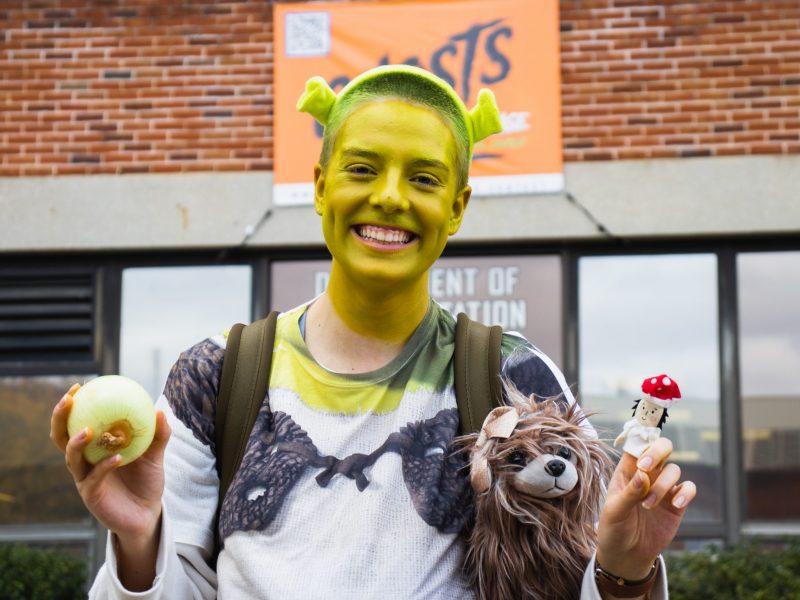When President Donald Trump was elected in 2016, I felt a dust storm of emotions. That January, I watched his inauguration from the TV on the indoor pathway between my high school’s two buildings. A small crowd formed to watch with mouths open.
The day after Trump was elected, a fellow 12th grader curled up on one of the worn sofas by the window of the pathway and cried quietly. Her hair was twisted into two low buns, little copper star pins stuck into the taut hair on her temples, and I wondered if she’d put them in before or after she saw the election results. A few feet away, two girls ran toward each other, whooping in celebration.
I have no memory of the time in between his election and his inauguration.
But those few moments, the clump of dumbstruck students, the crying girl, the dull January weather draping Trump as he delivered his inaugural love letter to division, hold a permanent place in my memory. Nov. 9, 2016, the day after Election Day, strikes me as an essential snapshot in my coming of age; many of my peers recall a similar stoppage of time on that day, a feeling of despair and anger, extreme emotions that at that time were still novel.
Those feelings would be a portent for the next four years. They would foreshadow not only the country’s tone during Trump’s time in office, but also the singular way that he sucked energy into his swirling, suffocating vortex.
[“A little taste of normal life”: How tattoos are getting students through quarantine]
I spoke to my friend, Jasmine, the night of this year’s election, as the returns were beginning to color the electoral map red. I’d just gotten off a call with my father, who was frantic and almost physically sick with worry.
“I’m just glad your mother’s gone to sleep,” he said. I could picture him precisely: sitting on the hairy sectional couch in front of our TV, an empty bottle of Diet Coke in his fist, eyes reddening in the blue glare of the news broadcast. He was sure Trump would win again.
I confided to Jasmine that along with being worried about the forefront issues — COVID-19, disinformation, a possible coup if Biden was elected — I felt another, more selfish dread. “To be completely honest,” I told her, “I don’t want my 20s to be about Trump.”
I had never put the sentiment into words. But as I said it out loud, I saw the recent past all laid out before me — a past defined in large part by sweeping policy decisions that have endangered the most vulnerable members of the population and encouraged a culture of xenophobia, outrage and rampant conspiratorial thinking.
I went through puberty and high school during the Obama era. But I became an adult under Trump. As Jasmine put it succinctly, life went from “Yes, we can” to “Holy shit, maybe you should not.”
My collegiate years, which I’d imagined in a reel of library meet-cutes and highly eloquent retorts, would instead play out in a series of lockdowns, with the backdrop of Trump’s bulbous caricature always looming.
[Make MAGA parody hats obsolete again]
In September 2017, the fall of my freshman year at the University of Maryland, Trump ordered a repeal of the Deferred Action for Childhood Arrivals program, which protects undocumented immigrants who arrived in the U.S. as children.
In April 2018, the spring before my sophomore year, Trump instated his “zero tolerance policy.” This further criminalized illegal immigration, resulting in forced family separations at the border. Encampments in Texas became notorious for their unhygienic conditions, which were conducive to disease spreading. Children died in custody.
In March of my junior year, Trump banned travel from Europe and China to quell the spread of the coronavirus, necessary steps that were overshadowed by his repeated use of the phrase “Chinese virus” to classify the deadly disease.
There is so much more than this. Legislative gridlock and human rights abuses are not endemic to this administration, but under it, they have become a daily routine, numbing us to their frequency and eliminating nuance from political conversation. From the age of 18 to 21, my personal growing pains converged with the nation’s rapid splintering. There were two crises taking place: the crisis of growing up and the crisis of a strained democracy.
Last spring, I stood in my kitchen with two of my roommates, talking late into the night about the travel ban, aware that something momentous and bad was about to happen.
In March, I had three friends over in the afternoon, and I brewed a pot of tea. It was the last time I would host a group of people in my home, and looking back, it registers as a kind of goodbye to society.
The next time I have friends over, it will be under Biden, and it will be a different world. I hope it happens sooner rather than later.
I recently left College Park and went home to my parents’ house for Thanksgiving and for the foreseeable future. As I drove through my parents’ Connecticut neighborhood for the first time in more than three months, I felt the physical pressure of the last four years, the way you can only feel something when you have a bit of relief.
And I felt some hope.
In some distant future, I will walk down the street in the middle of the day without a mask on. Maybe I’ll wear red lipstick. In that future, maybe I’ll be able to talk to conservative family friends without awaiting an inevitable moment of deep unspoken resentment. I’ll go to the dentist, and the hygienist will not ask me, tools in my mouth, about my thoughts on the removal of Confederate statues. I will visit another country without feeling ashamed of my accent, without responding to question after question about my thoughts on a leader I didn’t elect.
At least five Trump flags flanked a house on the left side of the street as I drove through the neighborhood; on the right side, through a scraggle of bare branches, a single Biden flag counter-protested, despite tacit victory. I turned the radio up and pressed my foot on the gas pedal, speeding a little, hoping for a clearer view.



